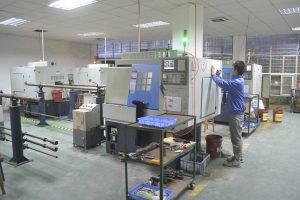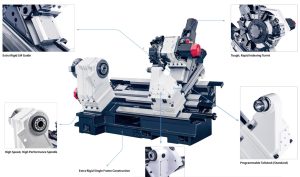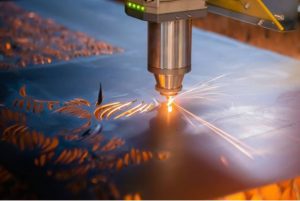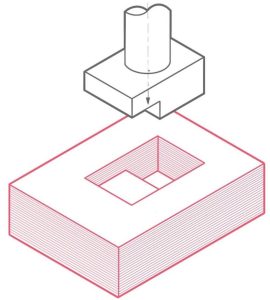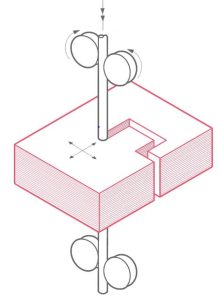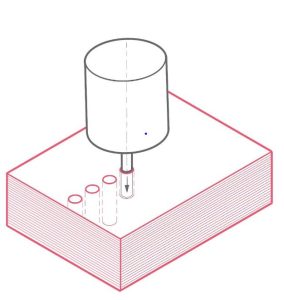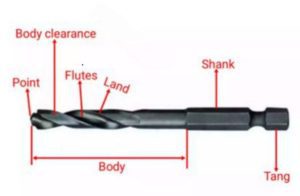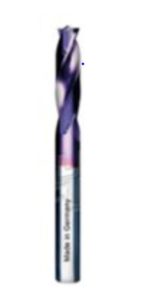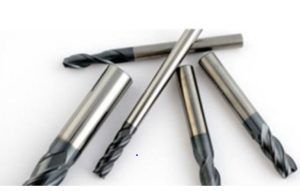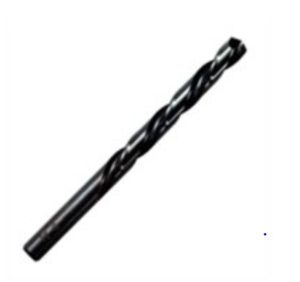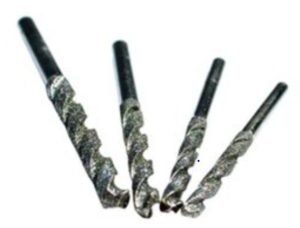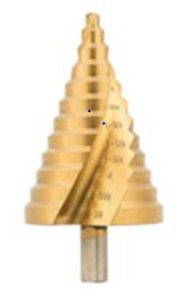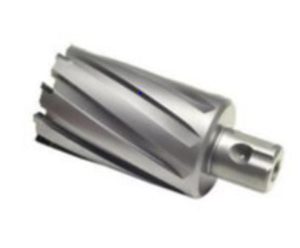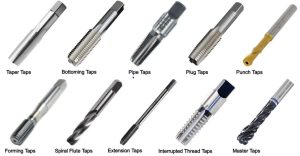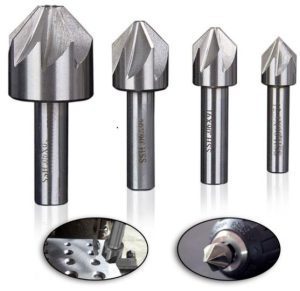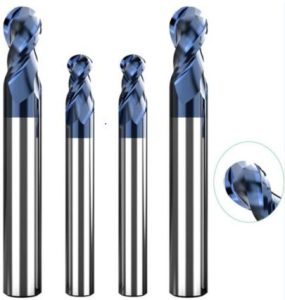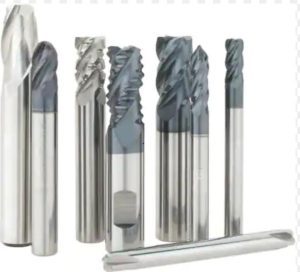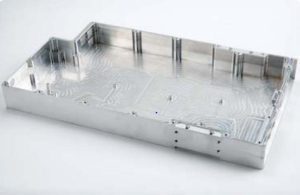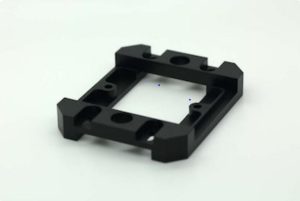Parts of a common drill bit are shown in the figure below:
Drill bits with different material coating execution are given below:
● Titanium nitride
● Titanium aluminum nitride
● Center and spotting drill bit
Face mill:
Shell mill is also the term used instead of face mill. A face mill is also used for surface finish and is always perpendicular to the workpiece.
Types of face milling cutters are:
- Square end tip tool
- Face mill tips with ball nose
- Radius-tipped face mill
- Chamfer tip tool
Different face milling operations are as follows:
- General face milling
- Heavy-duty face milling
- High feed milling
- Finishing with wiper insert
Considerations to optimize face milling:
- Choose the right face milling tool
- Must check technical parameters
- Must ensure milling tools are sharp
- Must check the tooltip before face milling
Thread tap:
Tapping is a CNC machining process to make threads in holes. There are many ways to make threads by use of CNC tapping. Some main types of tapping tools are:
- Taper tap
- Plug tap
- Bottoming tap
Thread making through tapping is beneficial in many aspects, as given below:
- Strength is high
- Convenient in making blind holes
- Endurance
- Efficiency
Countersink mill:
Countersinking is a machining process where V-shaped edges at the hole face are required. The main purpose of making a countersunk is to align the bolt head with the surface of the part or body. Countersink mill tool with some common angles is listed below:
- 60 degree
- 82 degree
- 90 degree
- 100 degree
- 110 degree
- 120 degree
Ball end mill:
The ball end mill is also known as the ball nose end mill. This tool is used where smooth contours of the surface are required. The types of ball end mills with four flutes are as follows:
- Carbide end mill
- Cutting cobalt end mill
- Single-end center cutting HSS end mill
- Center cutting TC carbide end mill
End mill:
The end mill is also used for the removal of material from a workpiece, with a wide range of applications such as:
- Profile milling
- Tracer milling
- Face milling
- Plunging
- Contouring
- Slotting
- Reaming
The end mill is also used for the removal of material from a workpiece, with a wide range of applications such as:
- Straight flute end mill
- Up and down cut end mill
- Ball nose end mill
- Roughing end mill
Undesrstanding different type of materials cut by CNC machining
CNC machining operations are very modern in technology and offer quite a versatile portfolio for material machinability. The materials used to cut by CNC machining are:
- Metals: Most common material used for CNC machining is metal which further includes:
- Stainless steel
- Aluminum
- Carbon steel
- Magnesium AZ31
- Brass
- Copper
- Titanium
Understand the Need For Proper Training
Generally, you will manage to build machining resources for your new manufacturing facility. However, it is about the training of your employees that bridges the gap between three core aspects:
- Designing
- Programming
- Machining the parts correctly
Training seminars allow CNC technicians, engineers, and programmers to grasp key aspects. Such sessions also provide the machinists with much-needed confidence and satisfaction. Comprehensive training can comprise one or a combination of the following modes:
- Web-based tracked courses
- Video seminars
- On-site training sessions
- Complex prototype development for training
- Sessions on worker safety, quality management, and teamwork.
Knowing CNC programming software
As the name suggests that CNC machines work with the aid of different software. Special machine languages called G code and M code are used to translate CAD model to CAM. So, understanding and developing skills regarding CNC software is very essential for CNC engineers and operators. If operators know the basics of machine and backend processing of CNC machines, then the manufacturability of complex parts with precision and accuracy is enhanced.
Engineers and operators work together to define various parameters in CNC programming including:
- Tool path strategies
- Spindle rate
- Feed rate
- Work plane setting
- Tool offsetting
- Tool material
- Machining axis
- Tool path optimization
Software used for programming CNC machines is listed as follows:
- SolidCAM
- NX CAM
- PowerMILL
- Mastercam
- EDGECAM/li>
- HSMWorks
Conclusion
To summarize, we hope that you have a sound knowledge of the top 7 aspects to consider before you start your own CNC machining manufacturing company. With the demand for custom parts and prototypes on the rise, CNC technology is playing a major role in today’s innovative era. It is just about building the right combination of CNC systems depending on the customers’ needs in your region and capitalizing on your strengths.
Worthy Hardware is a CNC manufacturing and sheet metal fabrication company,including CNC machining services,CNC milling services, CNC turning services, laser cutting services and stamping services.Call us +86-76989919645 or email us [email protected] for more discounts for your projects.


